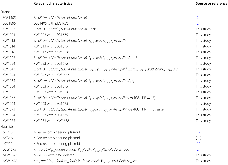Engineering E. coli for simultaneous glucose–xylose utilization during methyl ketone production
Previously, we developed an E. coli strain that overproduces medium-chain methyl ketones for potential use as diesel fuel blending agents or as flavors and fragrances. To date, the strain's performance has been optimized during growth with glucose. However, lignocellulosic biomass hydrolysates also contain a substantial portion of hemicellulose-derived xylose, which is typically the second most abundant sugar after glucose. Commercialization of the methyl ketone-producing technology would benefit from the increased efficiency resulting from simultaneous, rather than the native sequential (diauxic), utilization of glucose and xylose. In this study, genetic manipulations were performed to alleviate carbon catabolite repression in our most efficient methyl ket one-producing strain. A strain engineered for constitutive expression of xylF and xylA (involved in xylose transport and metabolism) showed synchronized glucose and xylose consumption rates. However, this newly acquired capability came at the expense of methyl ketone titer, which decreased fivefold. Further efforts were made to improve methyl ketone production in this strain, and we found that two strategies were effective at enhancing methyl ketone titer: (1) chromosomal deletion of pgi (glucose-6-phosphate isomerase) to increase intracellular NADPH supply and (2) downregulation of CRP (cAMP receptor protein) expression by replacement of the native RBS with an RBS chosen based upon mutant library screening results. Combining these strategies resulted in the most favorable overall phenotypes for simultaneous glucose-xylose consumption without compromising methyl ketone titer at both 1 and 2% total sugar concentrations in shake flasks. This work demonstrated a strategy for engineering simultaneous utilization of C6 and C5 sugars in E. coli without sacrificing production of fatty acid-derived compounds.
- Research Organization:
- Lawrence Berkeley National Laboratory (LBNL), Berkeley, CA (United States)
- Sponsoring Organization:
- USDOE Office of Science (SC), Biological and Environmental Research (BER)
- Grant/Contract Number:
- SC0015093; AC02-05CH11231
- OSTI ID:
- 1618887
- Alternate ID(s):
- OSTI ID: 1433113; OSTI ID: 1502853
- Report Number(s):
- LBNL-CRADA-20001187; 12; PII: 862
- Journal Information:
- Microbial Cell Factories, Journal Name: Microbial Cell Factories Vol. 17 Journal Issue: 1; ISSN 1475-2859
- Publisher:
- Springer Science + Business MediaCopyright Statement
- Country of Publication:
- United Kingdom
- Language:
- English
Web of Science
Efficient biohydrogen and bioelectricity production from xylose by microbial fuel cell with newly isolated yeast of Cystobasidium slooffiae
|
journal | September 2019 |
Metabolic engineering of Escherichia coli for shikimate pathway derivative production from glucose–xylose co-substrate
|
journal | January 2020 |
Similar Records
Engineering a Synthetic Escherichia coli Coculture for Compartmentalized de novo Biosynthesis of Isobutyl Butyrate from Mixed Sugars
Engineered Pseudomonas putida simultaneously catabolizes five major components of corn stover lignocellulose: Glucose, xylose, arabinose, p-coumaric acid, and acetic acid







